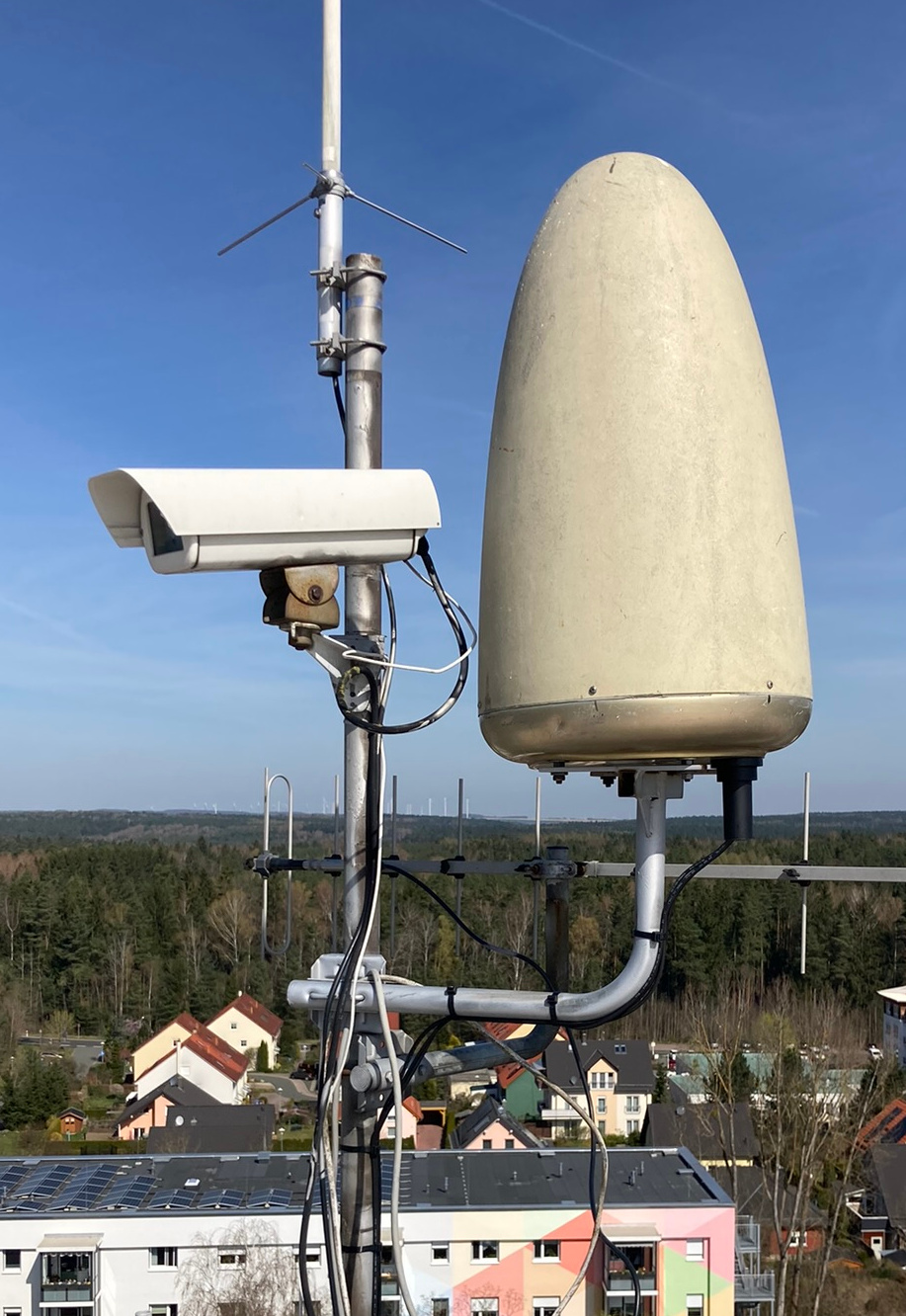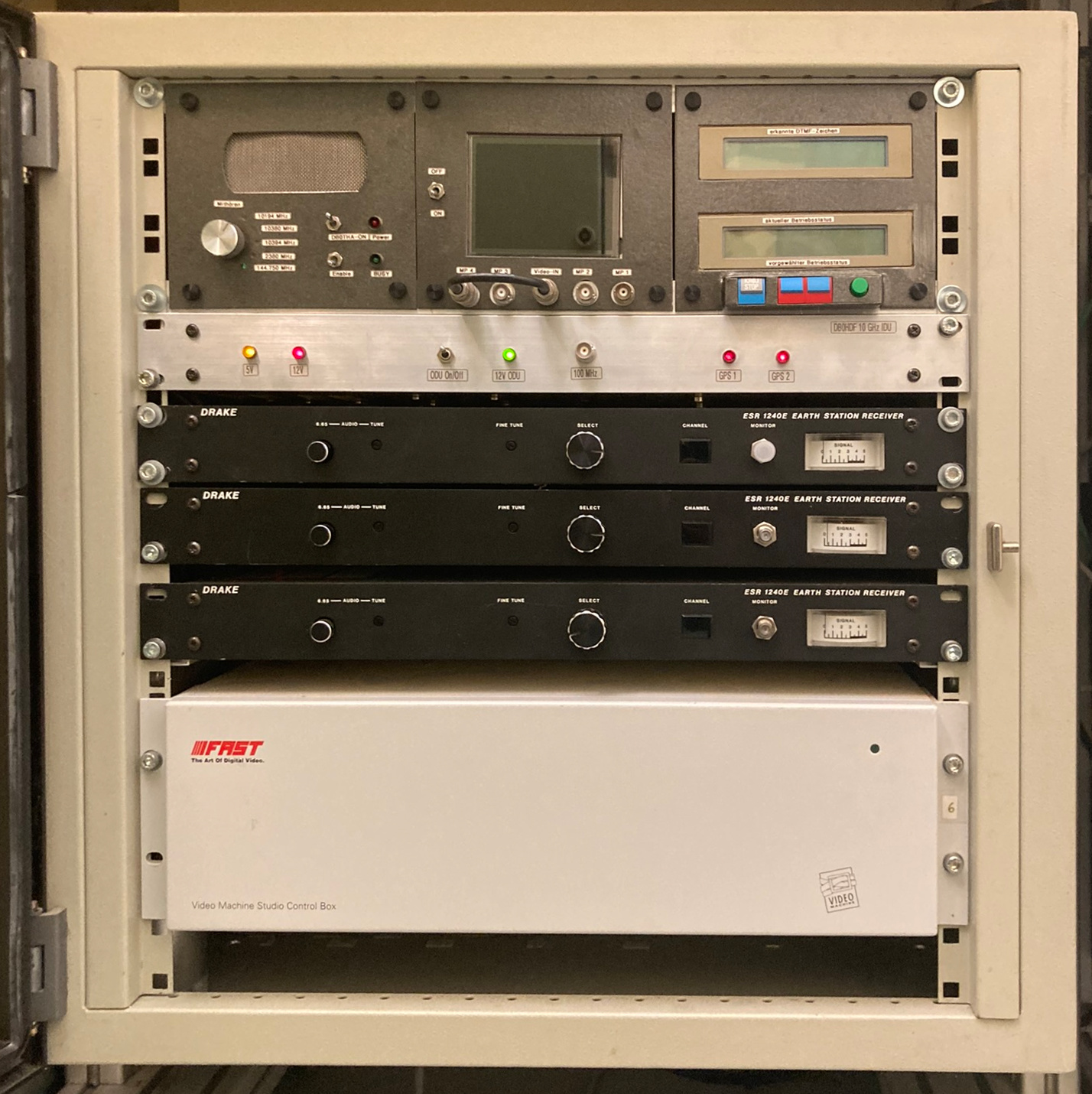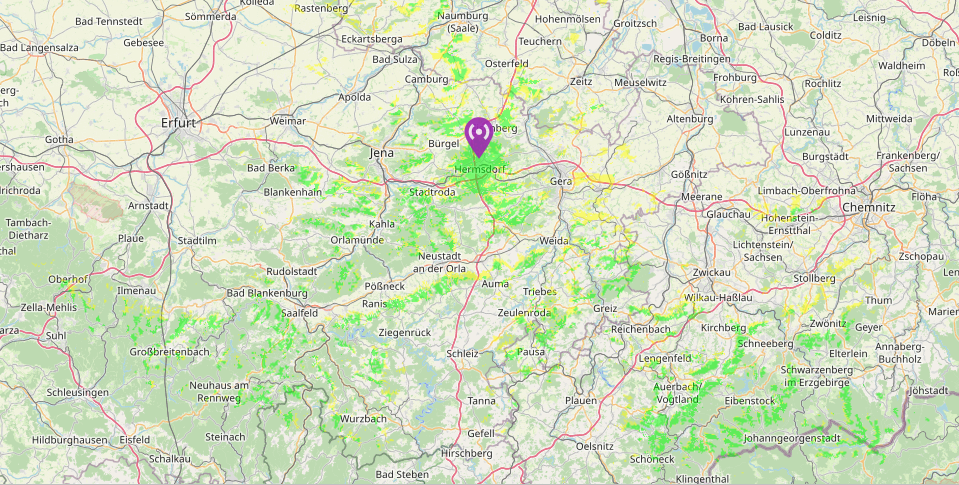10 GHz Beacon
Since April 2022, a 10 GHz propagation beacon is operated at the premises of DB0HDF. Coordinated within the IARU R1 C5 beacon project, this high-power beacon is permanently QRV on 10,386.888 MHz. Transmissions occur in CW (F1A) as well as PI-4 (F1B) and are synchronized to the top of the minute. The transmitter frequency is stabilized using a GNSS reference oscillator, which makes the beacon a suitable signal for calibration of portable stations, as well as a reliable signal source for propagation studies.
The beacon transmitter operates at 1.5 W output power into a slotted waveguide antenna providing a gain of about 10 dBi. The beacon has 360° view of the surrounding area, making an omnidirectional antenna a good fit for the beacon.
Outdoor Unit (ODU)
The main transmitter unit is located on the roof of DB0HDF, due to the complexities of distributing high-frequency signals from an inside location to an antenna located outdoors. The outdoor unit hence takes care of:
10 GHz beacon outdoor unit, shielded from weather by a protective radome.
- Power conditioning,
- transmission sequencing and modulation generation,
- frequency synthesis,
- RF amplification,
- monitoring and telemetry.
From inside the control room, the ODU is provided with a pre-regulated supply voltage, a 100 MHz GPS-disciplined reference clock, as well as a bidirectional serial link for telemetry and remote control.
The main electronics are mounted within a weather-resistant enclosure on top of a metal structure also useful for heat dissipation. An optionally temperature-controlled fan is mounted beneath the heat sink for hot summer days.
Telemetry for on-board voltages and current consumption, PCB temperature and transmitter output power are available. All synthesizers are monitored continuously, which allows automatically disabling the transmitter in case of any malfunction for regulatory compliance.
Indoor Unit (IDU)
Supervision and control of the externally mounted electronics is accomplished using a control unit located within an 19" rack mount unit containing the GNSS frequency reference (Leo Bodnar GPSDO), a Raspberry Pi single board computer and the necessary power supply facilities. Remote control of power to the outdoor unit is available through the SBC, which also takes care of time synchronization of the beacon transmitter and reception of periodic transmitter telemetry.
Equipment rack housing the 10 GHz Beacon IDU.
Reception
The beacon is readily received from many exposed locations within the wider area. Since the beacon was only installed recently, more detailed studies about direct reception coverage are still ongoing. Further, receiption reports using tropospheric and rain scatter propagation are highly sought after.
An estimate for the area covered by the beacon assuming a moderate antenna gain and portable station without anomalous propagation is shown below.

Estimated coverage area of DB0HDF on 10 GHz using direct propagation. (Credits - Map: osm.org, Coverage: VE2DBE)
Further Reading
Detailed technical information about the beacon transmitter can be found on its dedicated project web site.